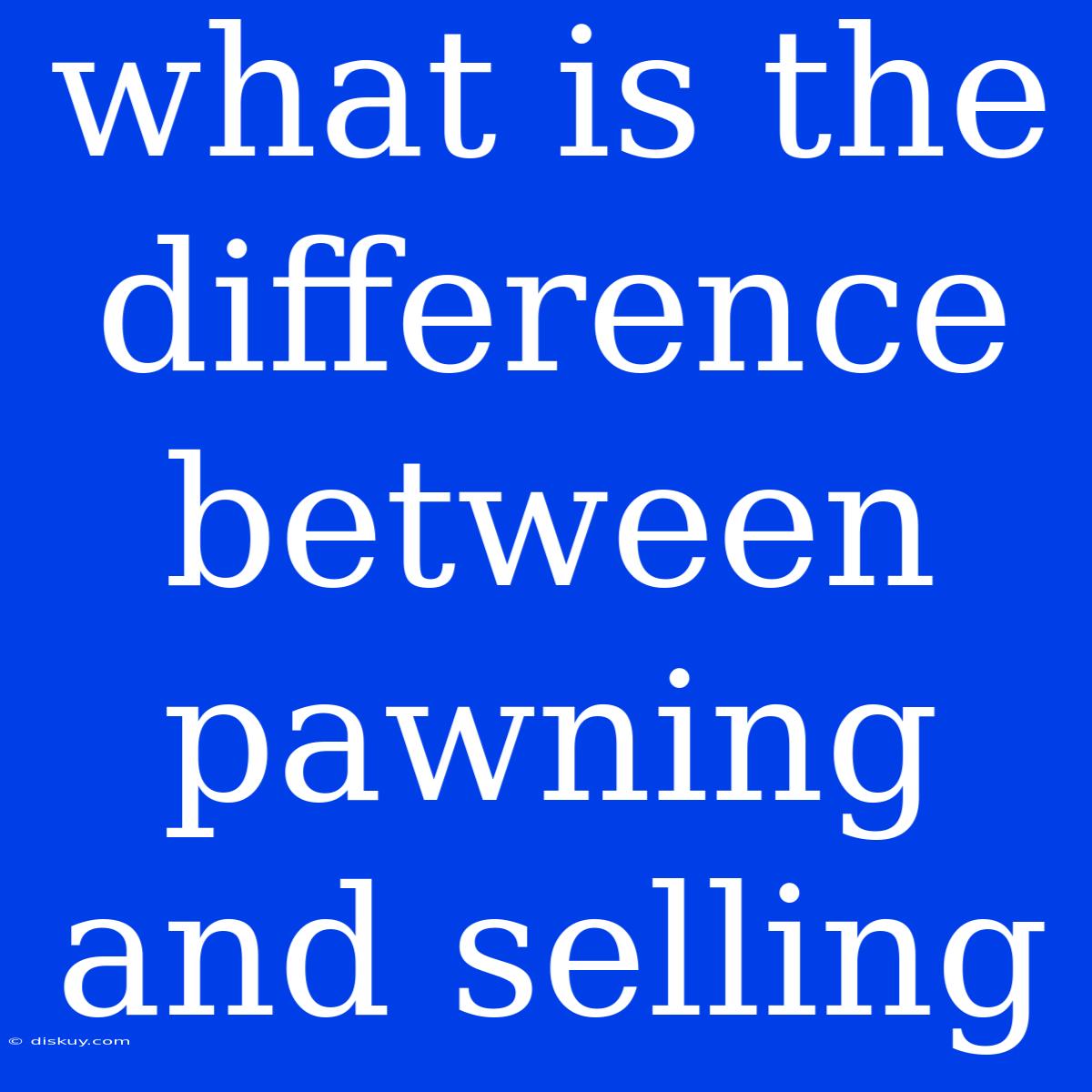Pawning vs. Selling: What's the Difference?
Do you need cash fast, but don't want to part with your valuable possessions permanently? Pawning and selling might seem like interchangeable options, but there's a crucial difference between the two. Understanding this distinction can help you make the best financial decision for your situation.
Editor Note: This article delves into the key differences between pawning and selling, offering insights into the advantages and drawbacks of each method. Whether you're looking to raise quick capital or considering parting with cherished items, this analysis will guide you toward the most suitable approach.
Why is this important? Knowing the difference between pawning and selling can save you money, stress, and potential regret. Understanding the implications of each option ensures you make a well-informed decision about your valuable possessions. This guide will cover the key aspects of both, including the legal aspects, financial implications, and the potential risks involved.
Analysis: Our research involved analyzing pawn shop policies, loan interest rates, and common selling platforms to present a clear comparison between pawning and selling. This guide uses real-world examples and expert insights to guide readers in making the best financial decisions when faced with selling or pawning their belongings.
Key Takeaways:
| Feature | Pawning | Selling |
|---|---|---|
| Ownership | You retain ownership but lose possession. | You permanently lose ownership. |
| Term | Short-term loan; repay to retrieve items. | Permanent transaction. |
| Price | Typically lower than market value. | Negotiable, but may be less than expected. |
| Flexibility | You can redeem your item within the term. | No option to retrieve the item. |
| Fees | Interest and potentially storage fees. | Fees associated with listing platforms. |
Pawning
Introduction: Pawning is a short-term loan where you provide a valuable item as collateral in exchange for cash. The pawnbroker assesses the item's worth and offers a loan based on a percentage of that value.
Key Aspects:
- Loan Agreement: This outlines the loan amount, interest rate, and redemption period.
- Redemption: You can reclaim your item by repaying the loan and interest within the agreed timeframe.
- Default: If you fail to repay, the pawnbroker can sell your item to recoup their loan and interest.
Discussion: While pawning offers immediate cash, it comes with the risk of losing your item if you can't repay the loan. Pawnbrokers typically offer lower prices than you'd get from selling, but they also provide a temporary financial solution.
Selling
Introduction: Selling involves permanently transferring ownership of your item to a buyer in exchange for cash. This can be done through various platforms, including online marketplaces, consignment shops, and individual buyers.
Key Aspects:
- Valuation: Researching similar items and considering condition is essential to set a fair selling price.
- Negotiation: You can negotiate with potential buyers to reach an agreeable price.
- Transaction: The transfer of ownership typically involves a formal agreement or receipt.
Discussion: Selling offers a higher potential payout but involves permanently parting with your item. It requires more effort to research, list, and negotiate a sale.
FAQ
Introduction: This section addresses common questions about pawning and selling.
Questions:
- Is pawning legal? Yes, pawn shops are licensed and regulated businesses.
- What items are commonly pawned? Jewelry, electronics, musical instruments, and tools are common pawnable items.
- What happens if I can't repay my pawn loan? The pawnbroker can sell your item to recoup their loan.
- How much can I get for selling my item? The price depends on the item's condition, demand, and negotiating skills.
- Are there fees associated with selling online? Many online marketplaces charge listing fees or commissions.
- Is it better to pawn or sell? The best option depends on your financial needs and willingness to potentially lose your item.
Tips
Introduction: Here are some tips to help you decide whether pawning or selling is right for you.
Tips:
- Research current market value: Determine a fair price for your item before pawning or selling.
- Compare pawn shop rates: Seek out shops with competitive interest rates and redemption periods.
- Explore alternative financing options: Consider personal loans or credit cards before pawning or selling.
- Read online marketplace policies: Understand fees, shipping costs, and buyer protection policies.
- Negotiate effectively: Don't be afraid to ask for your desired price when selling.
Summary
In conclusion, pawning and selling offer distinct financial pathways with different advantages and drawbacks. Pawning provides short-term cash but carries the risk of losing your item. Selling yields a potentially higher payout but requires permanently parting with your possession. Evaluating your individual needs and priorities will guide you toward the most appropriate decision.
Closing Message: Whether you choose to pawn or sell, taking a well-informed approach will ensure that you maximize your financial options while minimizing potential risks. Ultimately, the best course of action depends on your unique circumstances and your relationship with your valuable possessions.

